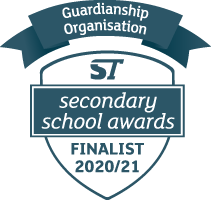Bullying, E-Safety & Social Policy
Bullying definition
Bullying is an ongoing misuse of power in relationships through repeated verbal, physical and/or social behaviour that causes physical and/or psychological harm. It can involve an individual or a group misusing their power over one or more persons. Bullying can happen in person or online, and it can be obvious (overt) or hidden (covert).
Bullying of any form or for any reason can have long-term effects on those involved, including bystanders. Single incidents and conflict or fights between equals, whether in person or online, are not defined as bullying. However, records are kept of all reported instances in a student’s file and if there are further reports, the issue will be escalated and appropriate action will be taken against individual(s).
Physical bullying
Physical bullying includes hitting, kicking, tripping, pinching and pushing or damaging property. Physical bullying causes both short term and long-term damage.
Verbal bullying
Verbal bullying includes name calling, insults, teasing, intimidation, sexual or racist remarks, or verbal abuse. Verbal bullying can escalate to levels which start affecting the individual target.
Social bullying
Social bullying, sometimes referred to as covert bullying, is often harder to recognise and can be carried out behind the bullied person's back. It is designed to harm someone's social reputation and/or cause humiliation. Social bullying includes:
- lying and spreading rumours
- negative facial or physical gestures, menacing or contemptuous looks
- playing nasty jokes to embarrass and humiliate
- mimicking unkindly
- encouraging others to socially exclude someone
- damaging someone's social reputation or social acceptance.
Role of WHG in e-policy: As WHG are acting in loco parentis, it is our duty to be aware and involved in all matters relating to a student’s online-safety. Examples of online dangers that we would like to make students aware of are:
Cyber bullying
Cyber bullying can be overt or covert bullying behaviours using digital technologies, including hardware such as computers and smartphones, and software such as social media, instant messaging, texts, websites and other online platforms.
Cyber bullying can happen at any time. It can be in public or in private and sometimes only known to the target and the person bullying. Cyber bullying can include:
- Abusive or hurtful texts emails or posts, images or videos
- Deliberately excluding others online
- Nasty gossip or rumours
- Imitating others online or using their log-in
https://www.ncab.org.au/bullying-advice/bullying-for-schools/
Cyberbullying is a form of bullying, and research reveals it has increased to affect 12% of young people in this country.
Details of this research can be found here:https://netchildrengomobile.eu/ncgm/wp-content/uploads/2013/07/NCGMUKQual-rev.pdf
Childnet's 2016 Cyberbullying Guidance, funded by the Government Equalities Office and European Union, shows schools how to embed cyberbullying in anti-bullying work
This Guidance is designed to support staff in preventing and responding to cyberbullying. The Guidance comprises of four main sections and although this was commission for schools, it is very much relevant to guardians in supporting students who may be suffering from cyberbullying.
- Understanding Cyberbullying - https://www.childnet.com/wp-content/uploads/2021/11/1-Understanding-cyberbullying1.pdf
- Preventing Cyberbullying - https://www.childnet.com/wp-content/uploads/2021/11/2-Preventing-cyberbullying1.pdf
- Responding to Cyberbullying - https://www.childnet.com/wp-content/uploads/2021/11/3-Responding-to-cyberbullying1.pdf
- Supporting Staff - https://www.childnet.com/wp-content/uploads/2021/11/4-Cyberbullying-Supporting-School-Staff.pdf
Childnet's 2016 Cyberbullying Guidance can be found here:https://www.childnet.com/resources/cyberbullying-guidance-for-schools
If a student approaches a WHG member of staff or we are notified by parents/agents that a student is a victim of cyberbullying. WHG will handle the concern sensitively and speak to the individual through their Local Guardian. The school will also be involved and if necessary the Police and Social Service if a student is under 16 years old.
Sexting
WHG strongly advises that students take caution when taking photos and posting them online. Once posted, you lose control over how they are shared.
WHG endorses and advises all staff to read The UK Council for Child Internet Safety publication on Sexting in schools and colleges: Responding to incidents and safeguarding young people.
Remember, it is illegal to take or share photos of anyone under the age of 18 that is deemed to be explicit. For students, we recommend watching the interactive videos, ‘Think you know?’:https://www.youtube.com/watch?v=TqLFAYeYVbQ
Who to speak to with a conern?
If you would like to raise a concern, you may want to speak with your Local Guardian or one of our Designated Safeguarding Leads:
- Peggotty Moore [email protected]
- Will Hume [email protected]
- Gail Millat [email protected]
How we will respond
In all cases WHG have a responsibility to support children who are bullied and make appropriate provision for a child’s needs. The nature and level of support will depend on the individual circumstances and the level of need. These can include a quiet word from their Local Guardian, a teacher that knows the pupil well, asking the pastoral team to provide support, providing formal counselling, engaging with parents.
In some circumstances the consequences of bullying may lead to a child or young person experiencing pronounced social, emotional or mental health difficulties. WHG will ensure they make appropriate provision for a child’s short term needs, including setting out what actions they are taking when bullying has had a serious impact on a child’s ability to learn.
Records are kept of all reported instances in a student’s file and if there are further reports of any of the above forms of bullying, the issue will be escalated and appropriate action will be taken against individual(s).
As a reminder, students should also be aware of the Student Behaviour Policy link
E-Safety
It is essential that children are safeguarded from potentially harmful and inappropriate online material. An effective understanding of online safety gives staff the ability to protect students, and staff in their use of technology and establishes mechanisms to identify, intervene in, and escalate any concerns where appropriate.
The breadth of issues classified within online safety is considerable and ever evolving, but can be categorised into four areas of risk:
- content: being exposed to illegal, inappropriate, or harmful content, for example: pornography, fake news, racism, misogyny, self-harm, suicide, anti-Semitism, radicalisation, and extremism.
- contact: being subjected to harmful online interaction with other users; for example: peer to peer pressure, commercial advertising and adults posing as children or young adults with the intention to groom or exploit them for sexual, criminal, financial or other purposes.
- conduct: online behaviour that increases the likelihood of, or causes, harm; for example, making, sending and receiving explicit images (e.g., consensual and non-consensual sharing of nudes and semi-nudes and/or pornography, sharing other explicit images and online bullying, and
- commerce: risks such as online gambling, inappropriate advertising, phishing and or financial scams. If you feel your pupils, students or staff are at risk, please report it to the Anti-Phishing Working Group.https://apwg.org/
Most students will have unrestricted access to online content via mobile networks. It is difficult to know what students are viewing at all times. There are signs that students may be looking at or being sent inappropriate contact such as:https://www.nspcc.org.uk/keeping-children-safe/online-safety/inappropriate-explicit-content/
If anyone believes a student is accessing inappropriate content online, they must contact a DSL:
- Peggotty Moore [email protected] +44 3 458 686 688
- Will Hume [email protected] +44 3 458 686 688
- Gail Millat [email protected] +44 3 458 686 688
- Update the students Local Guardian and depending on the severity of the concern, ask them to contact the student at this stage to discuss the inappropriate nature of the concern.
- Inform the DSL at the child’s school to discuss any measures that can be put in place between school and WHG to safeguard the student from repeating the concern. This may involve accessing the students’ phone/tablet/laptop etc. to ensure that appropriate controls are in place to safeguard the student from future exposure.
- Inform the students’ parents about the concern and archive all correspondence.
Policy Updated
10thOctober 2025
Policy Review Date
1stOctober 2026






